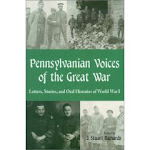
TAG PHOTO TO ENLARGE
I found this old photo in my collection of mining pic's, all it said on the back was Mahanoy City 1892..Maybe one of these guy's is Old Billy".. Although the mountains in the background look a little strange? ....Oh well!
May 18, 1880
Pottsville Evening Chronicle
Old Billy
A Horse Who Has A History
In 1864 Old Billy horse the subject of this article was condemned by the Government of the United States as being unfit for service, and was branded on the shoulder with the condemned brand. Upon his being condemned a butcher named Kroll, of Pottsville purchased him from the government for $21 and afterwards sold him to Mr. Joe Enich, of this place. (Mahanoy City) who in the fore part of 1865 sold him to Mr. Sibb, who was then in the livery business in Mahanoy city. In August, 1865 Mr. J.D. Lutz bought out Mr. Sibb and Billy was one of the horses he bought. Since that time to the present he has been in the possession of Mr. Lutz, and has proved himself a very valuable animal. At the time that Mr. Lutz got him he was beyond telling his age, and consequently he is at least over 25 years of age. If we would count only an average of 12 miles a day since Mr. Lutz has owned him he would have travelled 63,540 miles, not counting what he travelled before Mr. Lutz procured him, and, as Joseph says, many and many a day that horse has made 60 and 65 miles, and very few are the days that he has lain idle in the stable. He is as gentle as a child and as intelligent as some human beings. When Professor Gleason travelled through this district he remarked that he could take Old Billy and after one day’s rehearsal make him perform on the stage. Mr. Lutz never ties him in the sable, and if the cows get loose and Mr. Lutz wants them put out of the stable, all he has to do is go and open Old Billy’s box stall and tell him what is wanted of him, and he will chase them out and will not attempt to harm them. If Mr. Lutz wants to harness him up he gets the harness ready and calls Billy and he immediately comes and places his head in the collar. During the time that Mr. Lutz has had him he has never missed a meal from sickness or from being disabled. Above all he is trustworthy and honest and is a perfect pet with all those who congregate around the stable, knowing as well, as some of them often remark, just what they are saying about him as they do themselves. He is without doubt the oldest horse in this town, and, old as he is, there are but very few better ones in the town to day than Old Billy, and he has many friends as any person in Mahanoy City.
Mahanoy Tribune Newspaper.

















